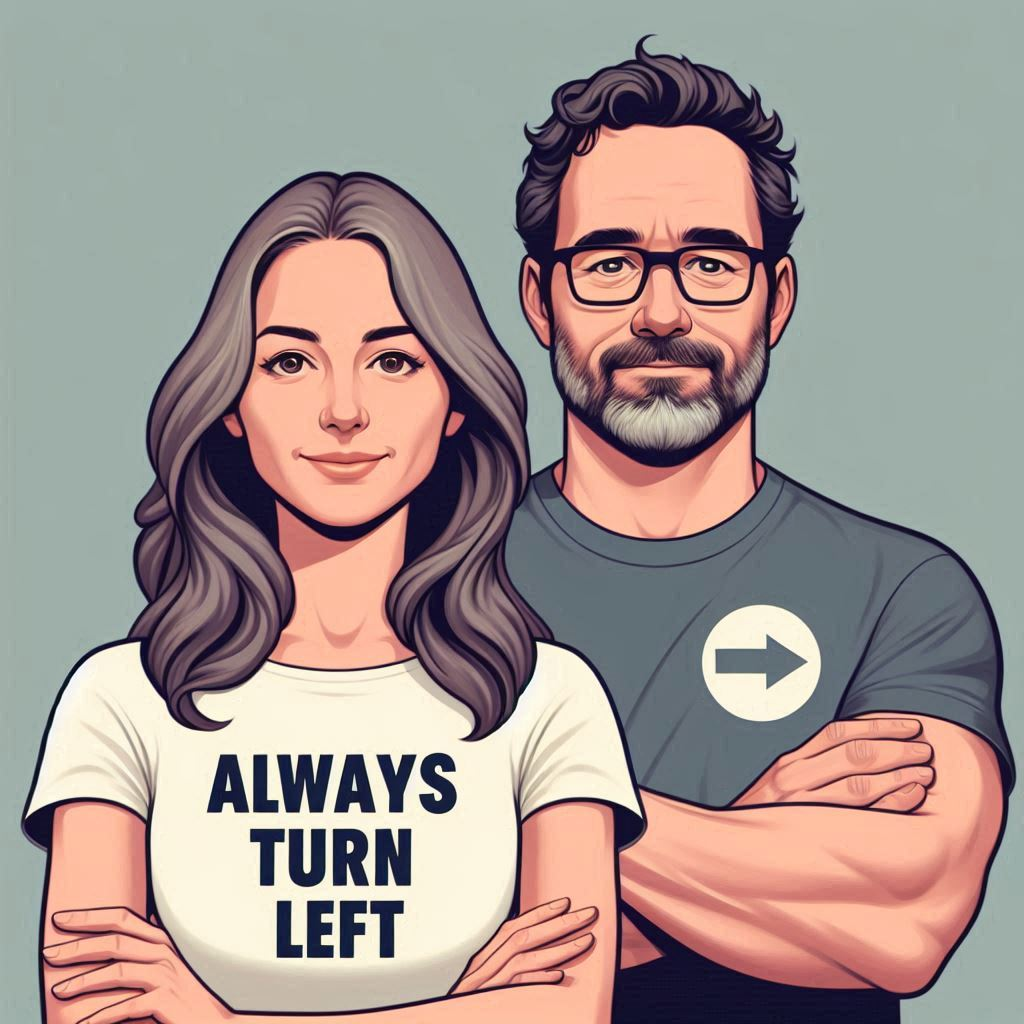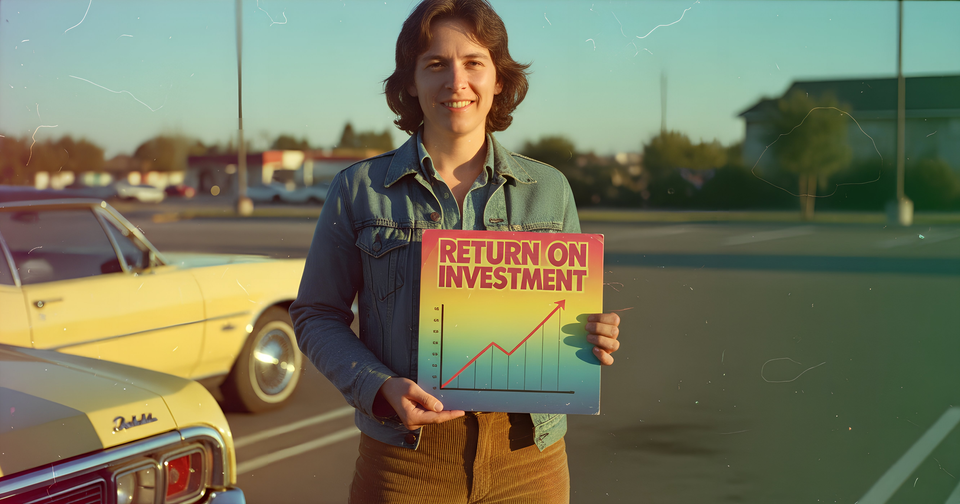How a San Jose Restaurant Owner Turned $750K in Spend Into First-Class Culture
The move unlocked luxury travel rewards, boosted team morale through employee trips, and turned routine expenses into a powerful engine for growth and culture. By shifting from a flat cashback card to a strategic points-based approach, the business maximized value from every dollar spent.


If You Only Had 60 Seconds to Read This Article (Click Here)
A family-owned Middle Eastern restaurant in San Jose, CA, was thriving with nearly $750,000 in annual spend but was relying on a flat 2% cashback card that earned just $13,800 a year. In early 2024, the owner began exploring whether points-based rewards could offer more value than cashback. That simple question led to a complete overhaul of the restaurant’s spending strategy—transforming expenses from passive costs into powerful assets.
By analyzing their spend categories—such as food vendors, delivery fees, and marketing tools—the owner implemented a multi-card system that strategically maximized points through category multipliers and welcome bonuses. The restaurant began earning between 375,000 and 1.35 million points annually, enabling redemptions far more valuable than simple cashback—like international business class flights and luxury hotel stays.
The real breakthrough came when the owner began using those points to reward employees with bucket-list travel experiences every quarter. A sous chef went to Tokyo, a line cook reunited with family in Istanbul, and the team rallied around this new culture of recognition and shared success. The program boosted retention, referrals, and social media engagement, turning a financial optimization into a cultural cornerstone.
Six months in, the financial ROI tripled and the cultural impact was even more profound. With a second location in planning, the owner is scaling the strategy further—tracking points with dashboards, training staff, and integrating rewards into long-term planning. What began as a credit card tweak evolved into a company-wide growth philosophy: stop leaving value on the table, and start turning every dollar spent into momentum.
Everything else you need to know is just below 👇🏻
From 2% Cashback to a Points-First Philosophy
In the heart of San Jose, CA, a successful Middle Eastern restaurant known for its sizzling kebabs and loyal customer base had a problem most business owners wouldn’t complain about: they were spending a lot—nearly $750,000 per year across food vendors, third-party delivery services, catering operations, and supply chain logistics. The owner had opted for simplicity in their card strategy, relying on a 2% cashback business card that generated around $13,800 a year in returns.
But in early 2024, that changed.
What started as a casual inquiry about "using points instead of cashback" turned into a full overhaul of how the restaurant viewed its expenses—not just as costs to be managed, but as opportunities to be maximized. Over the last six months, the transformation has reshaped not only the numbers—but also the culture.
Understanding the Before State: Predictable Spend, Predictable Returns
Business Profile
- Location: San Jose, CA
- Industry: Food & Beverage / Hospitality
- Type: Family-owned, single-location, high-volume restaurant
- Yearly spend: ~$750,000
- Card strategy: 2% flat-rate cashback on a single business credit card
- Annual rewards earned pre-optimization: $13,800 cash
The restaurant was doing well. Booked-out weekends, steady catering gigs, strong online delivery performance. But the credit card spend was flat—reliable, but under-leveraged. The owner assumed points were only useful for people flying constantly, not for someone running a food business 7 days a week.
The underlying assumption was that points were for consultants, tech founders, and road warriors—not restaurateurs. Until the math started to look different.
Step One: Analyzing the Spend
The restaurant’s spend fell into a few clear buckets:
Primary Expense Categories
- Food Distributors & Wholesale Vendors – 45% (~$337,500)
- Delivery Service Fees & Commissions – 20% (~$150,000)
- Restaurant Supply & Equipment – 15% (~$112,500)
- Marketing & Software Tools – 10% (~$75,000)
- Travel, Events, and Training – 5% (~$37,500)
- Miscellaneous (utilities, insurance, etc.) – 5% (~$37,500)
Once this breakdown was complete, the optimization began. Instead of pushing everything through a 2% card, the business adopted a multi-card strategy with custom workflows, aiming for category multipliers, welcome bonuses, and partner sweet spots.
By segmenting the spend into defined categories, the owner could start aligning the restaurant’s existing outflows with credit cards that offered above-average point multipliers for those exact categories. For example, food distributors could be paid with a card offering higher points on business expenses or wholesale categories. Software and digital tools? There’s a card for that too.
Step Two: Points Strategy Implementation
The card setup now includes:
- A 5x dining and delivery card for commissions and online orders
- A 4x marketing/software card for all SaaS tools
- A 3x travel card for occasional business trips or event hosting
- A new card every 4–6 months with a large welcome bonus
Each card is used precisely where it earns the most value, and staff were trained on where and how to route each type of expense.
The restaurant established a system to log, reconcile, and review charges monthly. This was no longer just “spend and forget”—it became a revenue stream in its own right. Every dollar spent was scrutinized for optimal reward yield. And the team bought in. Kitchen managers, delivery coordinators, and even admin staff began to view the points program as a part of their role.
The result? The business now earns between 375,000 and 1.35 million points per year, depending on promo offers, transfer bonuses, and redemptions. And unlike the old cashback structure, these points have a dynamic redemption range—a one-way business class seat worth $4,500, for example, might cost only 85,000 points.
It’s not just about earning more—it’s about creating more leverage with the same spend.
Redefining the Business Experience: First-Class Impact
More Than Math: A Cultural Shift
The numbers were compelling. But something else happened: the owner began to see how this shift could drive morale, loyalty, and retention.
He created a new tradition: every quarter, one standout employee gets to take a bucket-list trip, paid entirely in points. A sous chef flew to Tokyo and stayed in a five-star hotel. A line cook visited his family in Istanbul. A front-of-house manager spent four nights at a beachfront resort in Maui.
Each trip is documented and shared internally. It’s not just a perk—it’s become a cultural pillar. Employees now talk about destinations during breaks. They brainstorm trip ideas and nominate coworkers. Performance improved, not because of a policy, but because of purpose.
Quarterly Travel Redemptions
- Q1: Tokyo – Business class on ANA + 5 nights Park Hyatt Shinjuku
- Q2: Istanbul – Turkish Airlines + hotel on the Bosphorus
- Q3 (planned): Maui – American Airlines + Hyatt Regency
- Q4 (planned): Paris – Air France business + boutique hotel on points
None of this is paid in cash. These trips are fully funded by the restaurant’s everyday spend—the very same spend that used to yield just a few hundred dollars a month in cashback.
This kind of strategic generosity built trust. More than a bonus, it offered dignity—giving employees an experience that might have otherwise been unreachable. The cultural resonance of this program exceeded any loyalty program or 401(k) match.
Six-Month Check-In: Growth Metrics
Financial Return
- Pre-optimization cashback: $13,800/year
- Post-optimization points value: $37,500–$1,358,000/year (depending on redemption style)
- Net gain (conservatively): At least 3x the return
Intangible ROI
- Employee retention up: 22%
- Internal referrals for hiring up: 45%
- Customer engagement increased via travel storytelling on social media
- Owner reports higher satisfaction and long-term plans to open a second location sooner than anticipated
These numbers tell a compelling story, but the less visible impacts are equally profound. The owner noted that employees were more proactive, clients asked about the travel board, and job applicants mentioned the rewards program unprompted. It wasn’t just a financial tool—it became a brand narrative.
What’s Next: Scaling the Strategy
The restaurant now treats spend like a growth lever, not just a cost center. What’s more, the owner is beginning to take steps to scale this:
Future Plans
- Dedicated business travel fund sourced only from points
- Company offsite for managers funded entirely in award redemptions
- Custom reporting dashboard to track points earned, burned, and missed
- Integration with accounting software to tag each transaction by card type and earning potential
With a second location on the horizon, the points strategy will scale with it. The owner has already scoped the ideal vendor setup to replicate the same categories—and this time, they’ll launch with optimization from day one.
There’s even talk of a company-wide loyalty passport, where employees can earn additional "trip credits" based on length of service, team milestones, or peer nominations.
Key Takeaways
1. The Opportunity Was Always There
For years, this restaurant ran at full speed with minimal friction—but that same ease made it easy to overlook the rewards side. The spend was optimized for simplicity, not growth. But every cost center holds latent opportunity if you look closer.
2. Culture Is a Currency
The points funded more than flights—they funded recognition, loyalty, and pride. The new tradition of sending employees on world-class trips became a powerful internal driver that no $500 bonus could match.
It transformed the restaurant from a workplace into a platform for personal growth.
3. Growth Has Leverage
As the restaurant expands, the optimization scales. The same principles apply, but now with deeper institutional knowledge and muscle memory built into the team. Systems that reward smart spending are systems that breed leadership.
4. Cashback Was Holding Them Back
It’s not that 2% is bad—it’s that it’s predictable, capped, and uninspired. With points, the return potential became uncapped, high-leverage, and personally meaningful.
What once felt like a small financial perk became a cornerstone of team-building, marketing, and expansion.
Final Thoughts: It’s Not About Points. It’s About Potential.
This isn’t just about flying business class or staying in luxury hotels. It’s about recognizing that every dollar spent holds potential energy—and that with the right system, that energy can be turned into loyalty, culture, growth, and joy.
Our customer didn’t just change how he pays his vendors. He changed how he treats his team, how he grows his business, and how he dreams.
That’s what happens when you stop chasing cashback—and start building with points.




